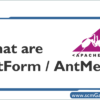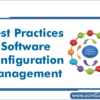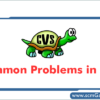
Difference between use and require in Perl – use Vs require in perl
|| use Vs require in perl || What is the difference between use and require? Except of course that use is evaluated at compile time where as require is evaluated…
Read more »
What are the Advance Features of Smart Build Tools?
Advance Features of Smart Build Tools {slideshare}[slideshare id=6995921&doc=advancefeaturesofsmartbuildandtoolsstudy-110220215438-phpapp02&type=d]{/slideshare}
Read more »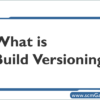
Software versioning – What is Build Versioning?
Version: It is a set of code to which major/minor or a Patch of changes is made. Hence we say a build is released to the QA team for testing….
Read more »
Introduction to CVS | Know ABout CVS | Quick Start Guide
Introduction to CVS CVS is a version control system, an important component of Source Configuration Management (SCM). Using it, you can record the history of sources files, and documents. It…
Read more »
The Four Basic Requirements for SCM Process – SCM Guide
Identification, control, audit, and status accounting are the four basic requirements for a software configuration management system. These requirements must be satisfied regardless of the amount of automation within the SCM process. All four may be satisfied by an SCM tool, a tool set, or a combination of automated and manual procedures.
- Identification—Each software part is labeled so that it can be identified. Furthermore, there will be different versions of the software parts as they evolve over time, so a version or revision number will be associated with the part. The key is to be able to identify any and all artifacts that compose a released configuration item. Think of this as a bill of materials for all the components in your automobile. When the manufacturer realizes that there has been a problem with parking brakes purchased from a subcontractor, it needs to know all the automobile models using that version of the parking brake. It is the same with software. If we are building a multimedia system that has audio MPEG3 drivers for Windows 98, Windows 2000, Windows CE, Linux, and FreeBSD operating systems, how do we find out which releases are impacted when we find an error in the Linux product? You must go back to your SCM system to identify all the common components in all operating system releases that are impacted.
Read more »
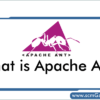
What is Apache Ant? – Apache ant Overview
What is an apache ant? Apache Ant is a Java-based build tool. In theory, it is kind of like Make, but without Make’s wrinkles. Why another build tool when there…
Read more »
What makes P4Win better than P4V? – P4V deficiencies
P4V deficiencies compared to P4Win Here’s list of P4V deficiencies & features missing as compared to P4Win… 1). In P4V you can’t paste paths onto the tree view as way…
Read more »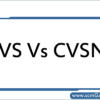
Major differences between CVS and CVSNT | CVS Vs CVSNT
Major differences between CVS and CVSNT | CVS Vs CVSNT CVSNT was started as a variation (or branch) of CVS in 1999 because patches contributed to CVS were not considered…
Read more »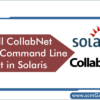
How to Install CollabNet SVN Command Line Client in Solaris?
Link: http://www.collab.net/downloads/subversion/solaris.html 1. Platform and configuration Product: CollabNet Subversion client Platforms: Solaris 10 SPARC Prerequisite: You must be a superuser (root) to install and uninstall CollabNet Subversion. 2. Import/Update CollabNet…
Read more »
Introduction of p4win | p4win Overview | What is p4win?
P4Win is a Windows-Explorer-style program that helps you manage files that are stored in the Perforce software configuration management system. Using P4Win, you can view files, check them in and…
Read more »
